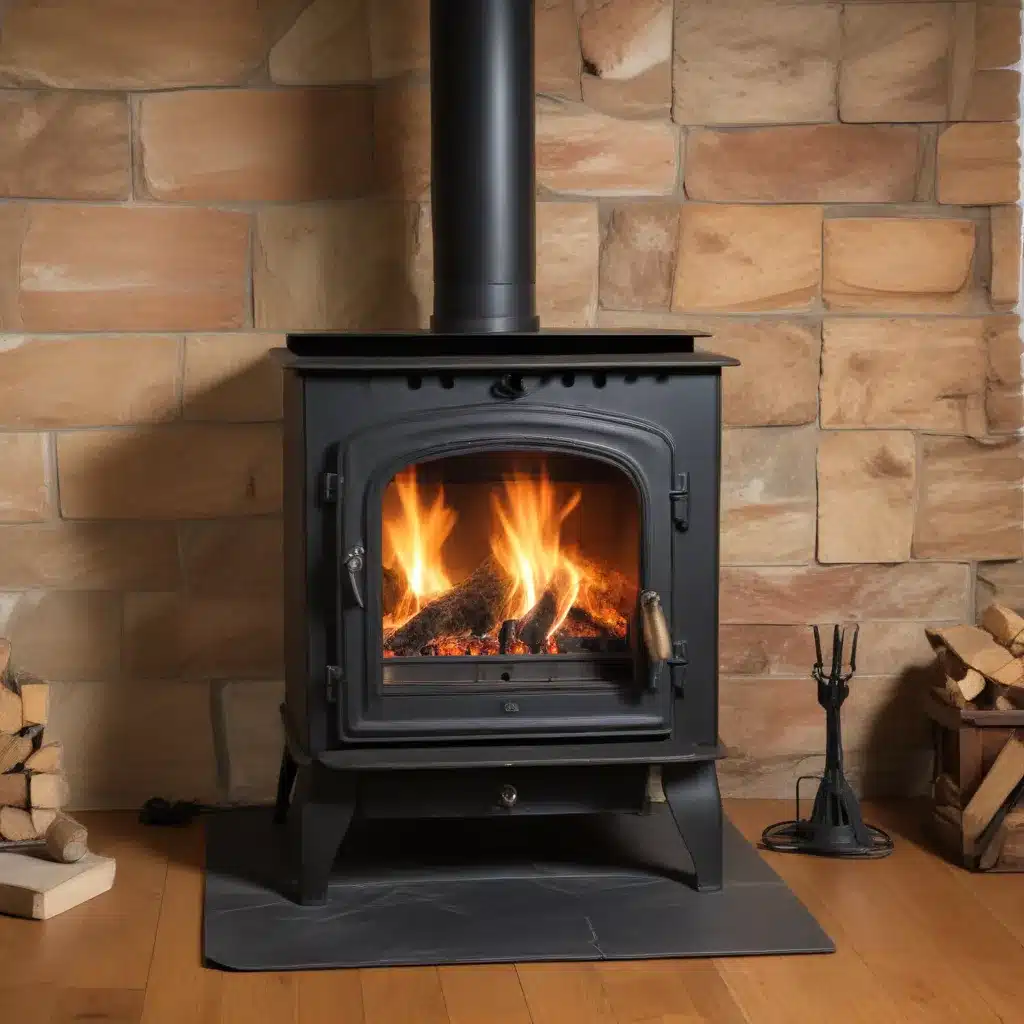
Understanding the Dangers of Creosote Buildup
Wood stoves are a popular and efficient heating solution, providing warmth and ambiance to homes across the country. However, improper maintenance and usage can lead to a serious fire hazard – the dreaded chimney fire. At the heart of this issue is a substance called creosote, a byproduct of the wood-burning process that can accumulate inside your chimney and flue.
Creosote is a gummy, foul-smelling, corrosive, and extremely combustible substance that can coat the interior surfaces of your chimney. As it builds up over time, creosote becomes increasingly flammable, creating the potential for a raging chimney fire that can quickly spread to the rest of your home. In fact, creosote is the leading cause of most chimney fires and the primary reason chimneys and pipes require regular cleaning and inspection.
Recognizing the Signs of a Chimney Fire
One of the first signs that a chimney fire may be occurring is a popping, crackling noise coming from the stovepipe or chimney. This is caused by the rapid combustion of the built-up creosote. If you hear these telltale sounds, it’s crucial to act quickly.
Another indicator is flames or sparks shooting from the top of the chimney. This is a clear sign that the creosote has ignited, and immediate action is required. In this scenario, it’s best to close the stove’s air intake and call the fire department immediately, as trying to extinguish the fire yourself could be extremely dangerous.
Implementing Preventive Measures
Fortunately, there are several effective strategies you can employ to prevent the buildup of dangerous creosote and minimize the risk of a chimney fire. By following these steps, you can enjoy the warmth and ambiance of your wood stove while ensuring the safety of your home and family.
1. Regular Chimney Cleaning and Inspection
Regularly cleaning your chimney is one of the most crucial steps in preventing a chimney fire. Experts recommend having your chimney inspected and cleaned at least once a year, or more frequently if you use your wood stove heavily throughout the winter. This ensures that any accumulated creosote is removed, restoring proper airflow and reducing the risk of ignition.
When cleaning your chimney, it’s essential to use the right tools and techniques to avoid creating a mess or damaging the structure. Many homeowners choose to hire a professional chimney sweep, who has the experience and equipment to safely and effectively clean the entire system.
2. Burning Dry, High-Quality Firewood
The type of wood you burn in your stove can also have a significant impact on creosote buildup. Wet or unseasoned wood will not burn as hot as properly dried wood, leading to increased smoke and a faster accumulation of creosote. Opt for hardwood species, such as oak, maple, or ash, as they tend to burn hotter and produce less creosote than softwoods like pine or fir.
3. Maintaining Optimal Burn Conditions
Ensuring that your wood stove operates within its “burn zone” is crucial for preventing creosote buildup. By maintaining a hot, efficient burn, you can minimize the production of creosote and keep your chimney system clean. Consider investing in a chimney temperature gauge or other monitoring device to help you maintain the optimal burn range.
If your stove is not drafting properly or you notice smoke coming out of the door, it may be a sign that the chimney is becoming obstructed and needs cleaning. Address these issues promptly to avoid the buildup of creosote.
4. Using Creosote-Reducing Additives
While not a substitute for regular chimney cleaning, some homeowners have found success in using creosote-reducing additives in their wood stoves. These powdery substances are designed to help transform the creosote into a more easily removable form, reducing the overall buildup. However, it’s important to follow the manufacturer’s instructions carefully and not rely solely on these products to prevent a chimney fire.
5. Proper Ash Removal and Disposal
Regularly removing ashes from your wood stove’s firebox is an often-overlooked but essential task. Accumulated ash can interfere with airflow and fuel ignition, leading to incomplete combustion and increased creosote production. Develop a routine of removing ashes every few days, using a small scoop or shovel to minimize dust and mess.
Properly dispose of the ashes by placing them in a metal container and storing them away from any combustible materials. This helps prevent accidental fires and ensures that the ashes don’t contribute to the buildup of creosote in your chimney.
Staying Vigilant and Prepared
While taking proactive steps to prevent chimney fires is crucial, it’s also important to be prepared in the event that a fire does occur. Familiarize yourself with the signs of a chimney fire and have a plan in place for quickly contacting the fire department and, if safe to do so, attempting to extinguish the blaze.
Remember, the safety and well-being of your home and family should always be the top priority when it comes to wood stove usage. By following the strategies outlined in this article, you can enjoy the warmth and ambiance of your wood stove while minimizing the risk of a dangerous and potentially devastating chimney fire.
For more information on wood stove maintenance, energy-efficient heating solutions, and fire safety, be sure to visit https://woodstoveheaters.com/. Our team of experts is dedicated to providing comprehensive resources to help homeowners like you stay safe and comfortable all year round.


